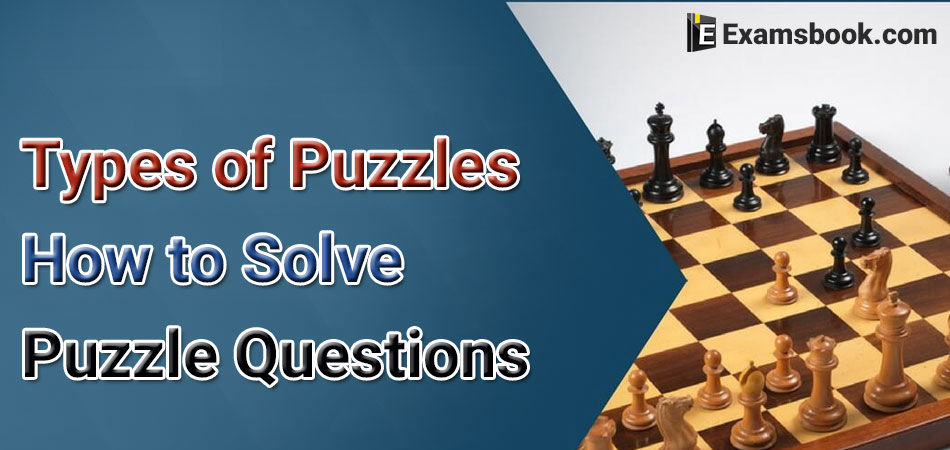Types of Puzzles - How to Solve Puzzle Questions

TYPING 2: Seating/Placing Arrangements
In this type of question, Some clues regarding seating or placing sequence (linear or circular) of some persons or items are given. The candidate is required to form the proper sequence using these clues and answer the given question accordingly.
Ex.2. Read the following information carefully to answer the questions given below:
Nine Cricket fans are watching match in a stadium. Seated in one row, they are J, K, L, M, N, O, P, Q and R. L is at the right of M and at third place at the right of N. K is at one end of the row. Q is seated adjacent to both O and P. O is at the Third Place at the left O.
1. Who is sitting at the centre of the row?
(A) I
(B) J
(C) O
(D) Q
2. Who is at the other end of the row?
(A) J
(B) N
(C) P
(D) R
3. Which of the following statements is true?
(A) N is two seats away from J.
(B) M is at one extreme end.
(C) R and P are neighbors.
(D) There is one person between L and O.
Solution:
L is at right to M and at third place at the right of N. So, the sequence becomes NOML. O is at third place at the left of K and J right next to left of O i.e,.JOOOK. Q is adjacent to both O and P i.e. JOQPK. Thus, the only black space left must be occupied by R i.e NRML.
Since K is at one end of the row, so the entire seating sequence becomes: NRMLJOQPK.
1. J is sitting at the centre of the row. So, the answer is (b).
2. N is at the other end of the row. So, the answer is (b).
3. Clearly, there is one-person J between L and O. So, only (d) is true. Hence, the answer is (d).
TYPE 3: Comparison Type Question
In such type of questions, clues are given regarding comparisons among a set of persons or things with respect to one more quality. The candidate is required to analyze the whole information, form a proper ascending/descending sequence and then answer the given questions accordingly.
Ex.3. Read the following information and answer the question given below it:
Alka is older than Mala. Gopal is older than Mala but younger than Alka. Kapil is younger than Ram and Mala. Mala is older than Ram.
Q.1. Whose age is between Gopal and Ram?
(A) Mala
(B) Kapil
(C) Alka
(D) None of these
Q.2. Whose age is between Mala and Kapil?
(A) Gopal
(B) Ram
(C) Alka
(D) None of these
Q.3. Whose age is exactly in the middle of all the five?
(A) Mala
(B) Gopal
(C) Ram
(D) Alka
Q.4. Who is the eldest?
(A) Alka
(B) Mala
(C) Kapil
(D) Gopal
Q.5. Who is the youngest?
(A) Mala
(B) Ram
(C) Alka
(D) Kapil
Solution:
Let us denote the five persons by the first letter of their names, namely A, M, G, K and R.
Then, A > M, A > G > M, R > K, M > K and M > R.
Combining all the above, we get : A>G>M>R>K.
1. Mala's age is between Gopal and Ram. So, the answer is (a).
2. Ram's age is between Mala and Kapil. So, the answer is (b).
3. Clearly, Mala lies in the middle when all the five persons are arranged in ascending or descending order of their ages. So, the answer is (a).
4. Clearly, Alka is the eldest. So, the answer is (a).
5. Kapil is the youngest. So, the answer is (d).



